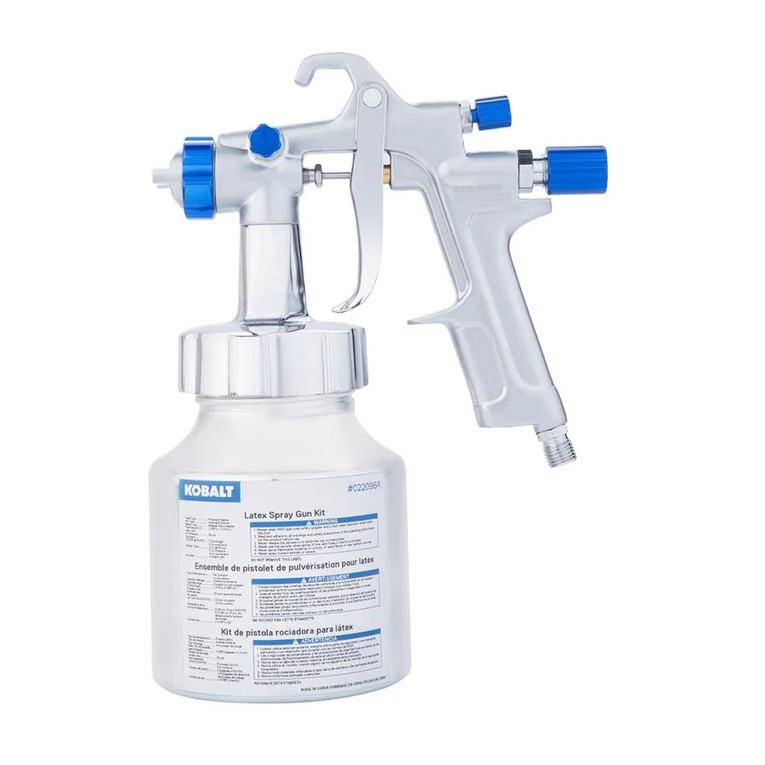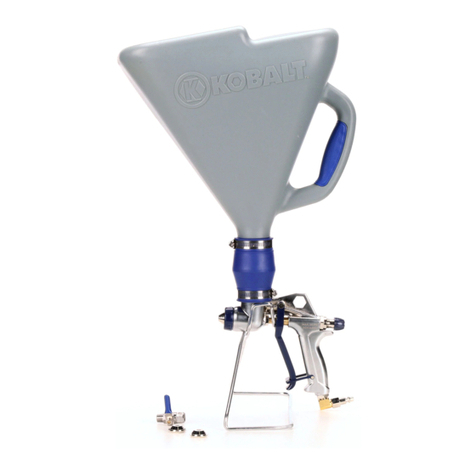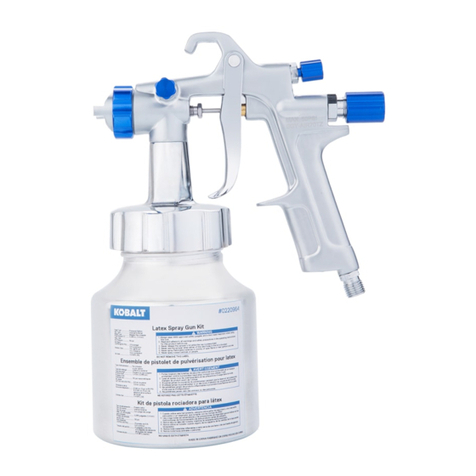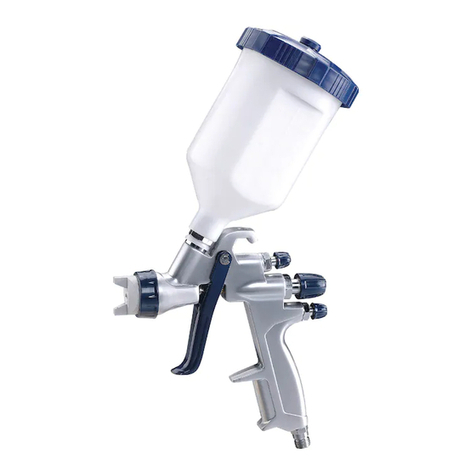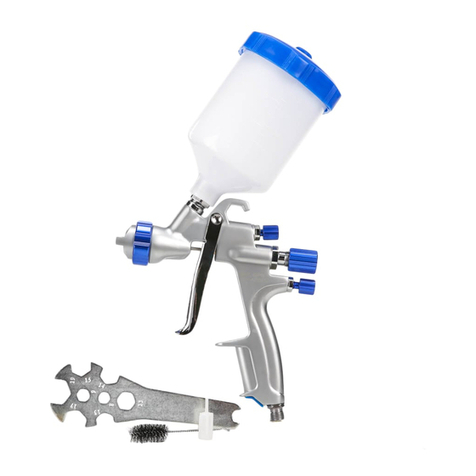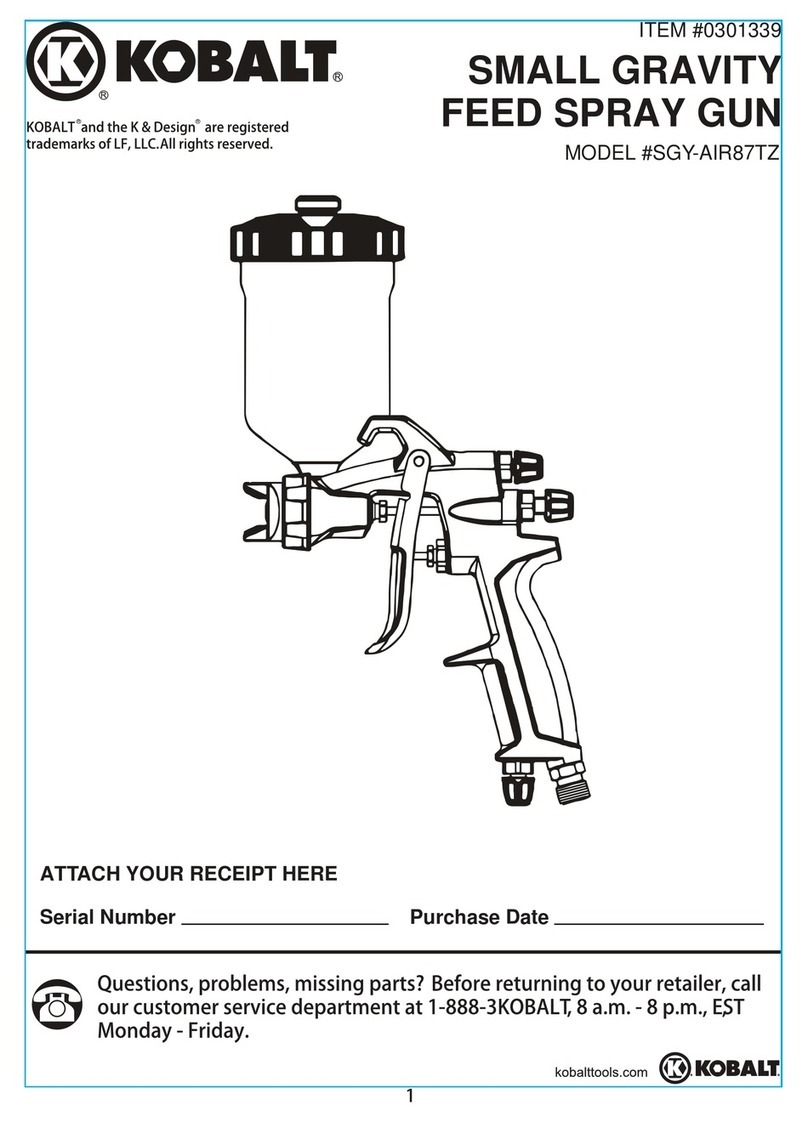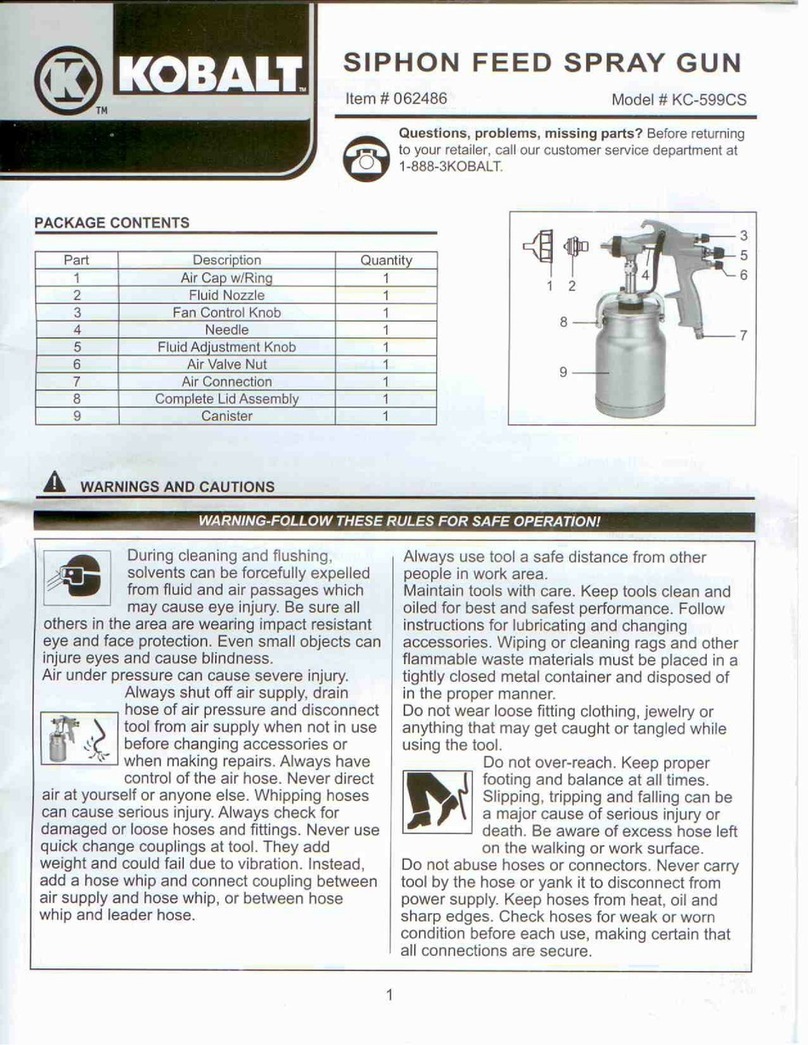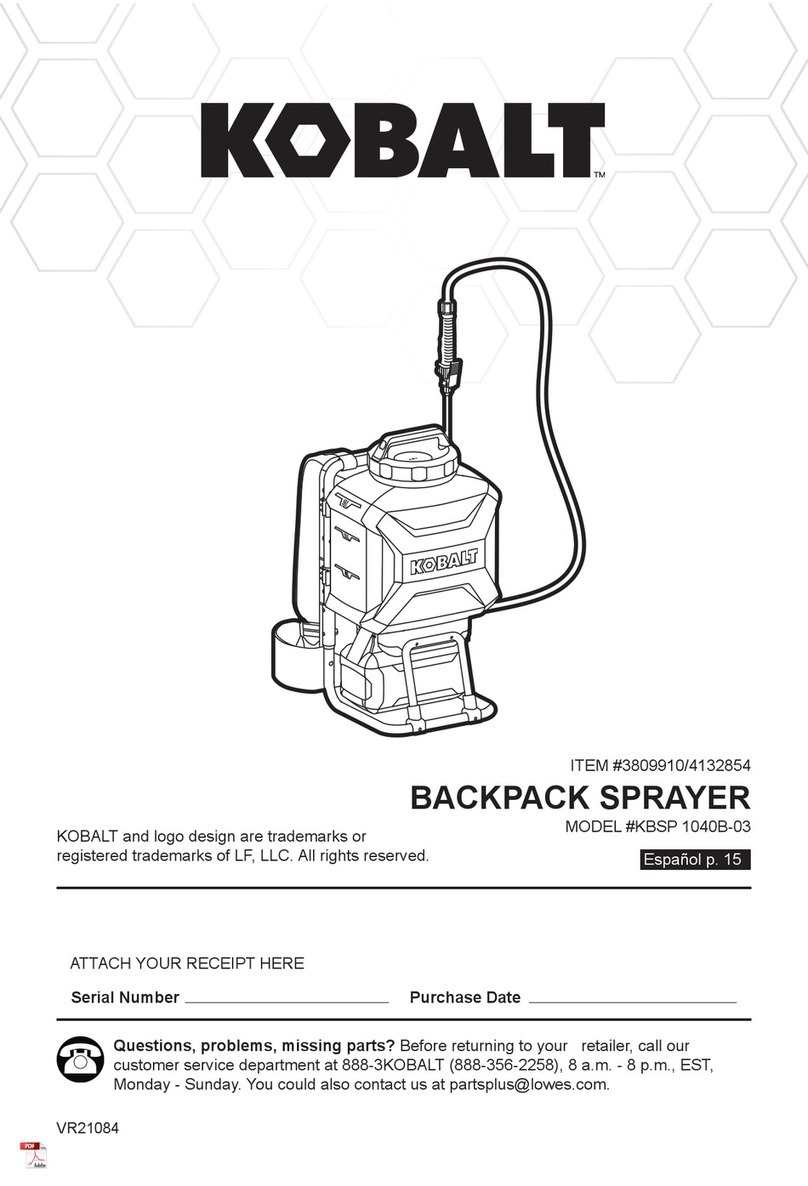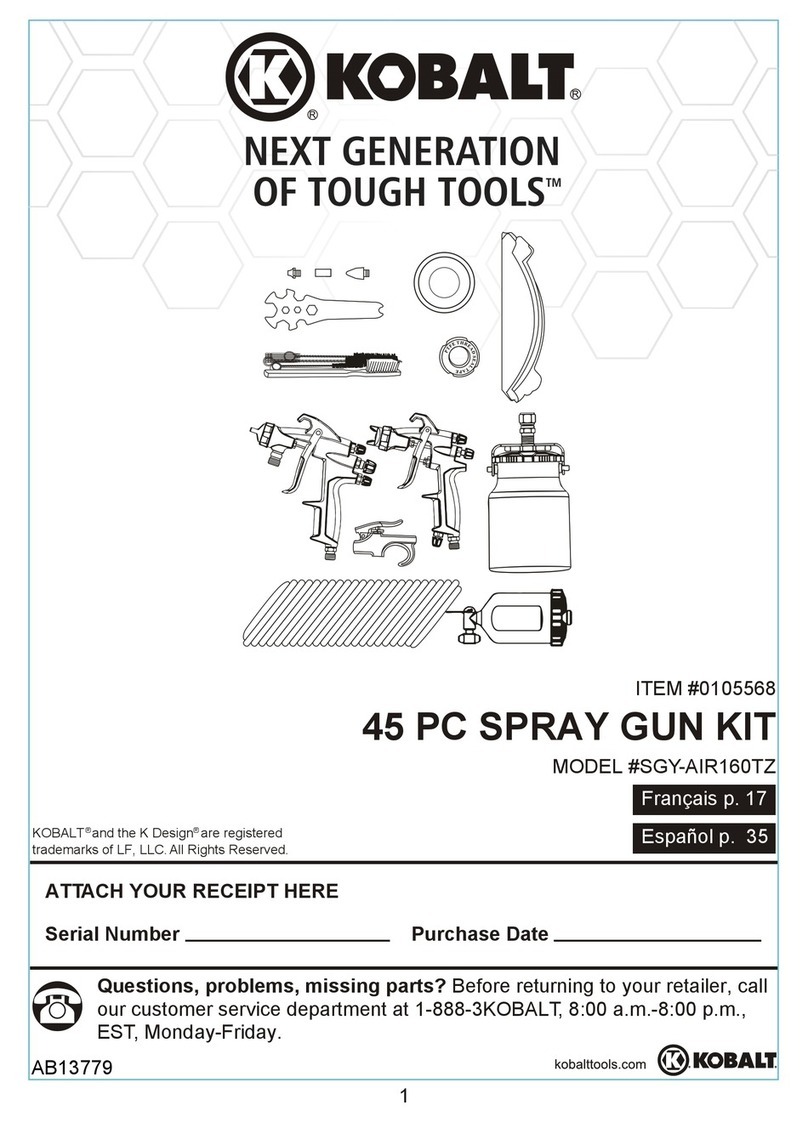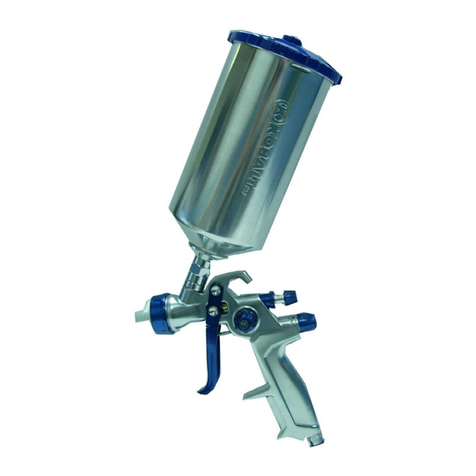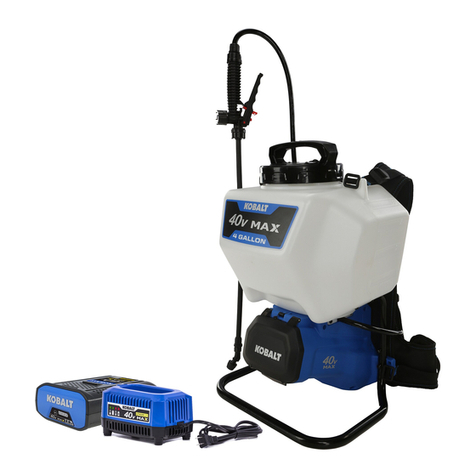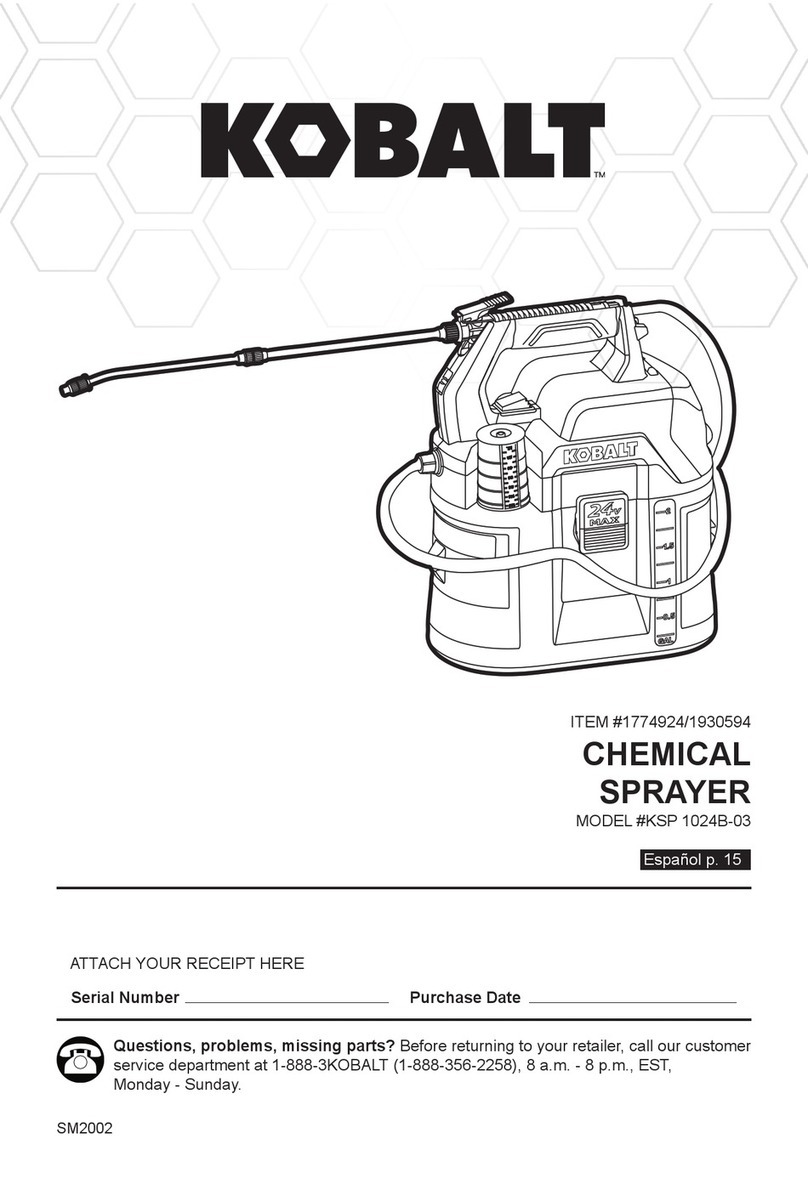
5
SAFETY INFORMATION
RISK OF EYE OR HEAD INJURY
WARNING
WHAT COULD HAPPEN HOW TO PREVENT IT
This tool is capable of spraying
flammable materials which can result
in fire or explosion.
Never operate sprayer in the vicinity
of open flame or near ignition sources
(pilot lights, cigarettes, portable
electric lamps, etc).
Never operate tools near flammable
substances such as gasoline,
naphtha, cleaning solvents, etc.
Work in a clean, well ventilated area
free of combustible materials.
Never use oxygen, carbon dioxide or
other bottled gasses as a power
source for air tools.
PAINT SPRAYER HAZARDS
WARNING
WHAT COULD HAPPEN HOW TO PREVENT IT
Use of fluids that are incompatible
with aluminum in pressurized
equipment can cause serious
chemical reaction and equipment
rupture. Failure to follow this warning
can result in death, serious injury, or
property damage.
Do not use chlorinated solvents
(e.g. 1-1-1-trichloroethene, methylene
chloride). Many spray guns contain
aluminum, which reacts strongly to
chlorinated solvents. Contact the
solvent or coating manufacturer
regarding questions about potential
chemical reactions.
Compressed air can be hazardous,
propelling objects or particles that
can cause injury into soft tissues
such as eyes and ears.
Never direct air at yourself or anyone
else.
Never leave a pressurized tool
unattended.
Disconnect tool from air supply when
tool is not in use or when cleaning.

